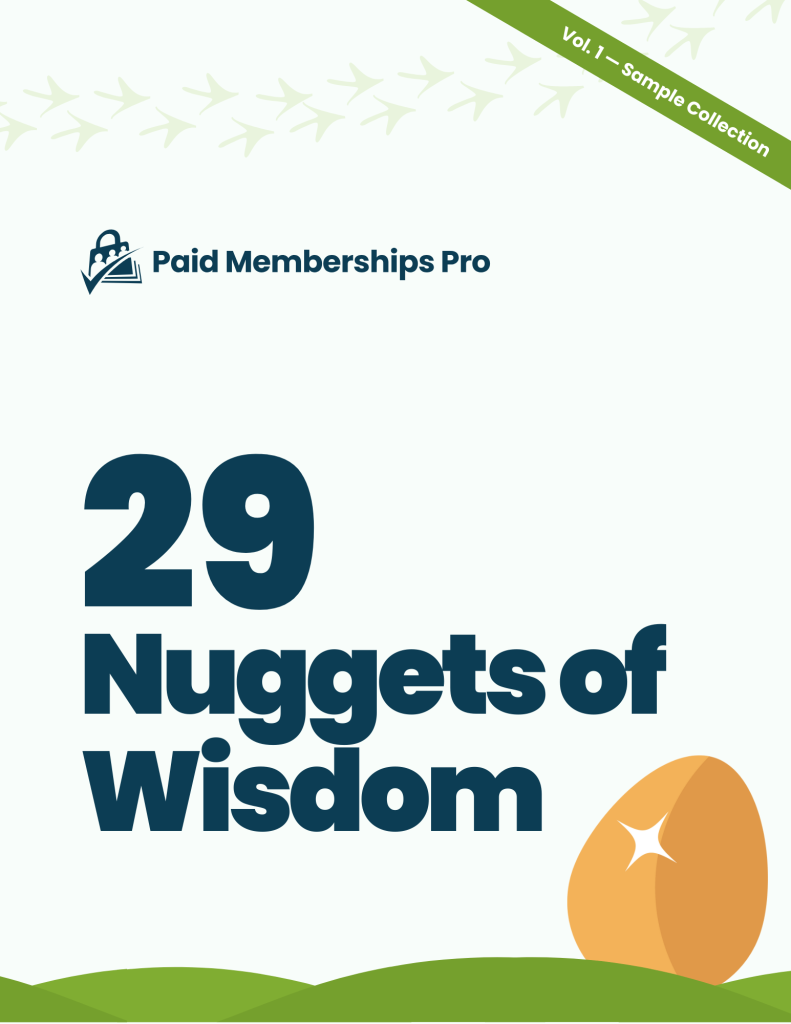If you do not build it, they will not come.
Within the past 18 months, I’ve launched two courses that no one purchased – and I already had an audience!
Today, we’re going to talk about how to market your course.
Build Your Initial Audience
To get any real sales for your course, you’re going to need to build an audience. That means you need to start producing some type of content in some form.
In fact, most people that release a course are already producing content in some fashion; They either have a blog that people read, or a YouTube channel that people watch.
Or, they’ve written some books and have a newsletter.
Don’t expect to sell your course without an audience that is already listening to what you have to say.
The YouTube Advantage
If you’d like to release a video course, consider starting a YouTube channel around a similar topic.
For example, my channel talks about productivity and research methods that are all focused around Apple tools. When I released my Obsidian course, people were already watching my Obsidian videos.
So, they naturally wanted to purchase the course.
The same thing happened when I released my TickTick course; People were already watching my videos on task management and productivity.
I had an existing audience that was verifiably interested in what I had to say about task managers and how I use them.
As you start planning your course, make sure that you pay attention to how people are responding to your existing content.
For example, if no one watches your basket weaving videos, they probably won’t pay for your basket weaving course either.
Maybe you decide to do a course on rug making instead, because that’s what people are already watching.
Mailing Lists and Newsletters
Once you have an inkling of what your course is going to be about, you can decide where to direct your audience. You could create a landing page where they can sign up to find out when the course is released, for example.
Many of my courses are focused around personal knowledge management. For this reason, I email out a newsletter called PKM Weekly that summarizes the helpful articles I find every week.
Then, when I launch a course, I’ll include a link to it at the top of the newsletter.
In my experience, this newsletter converts more course sales than any other marketing channel. In my last newsletter, I launched a new course and saw a 15% sales conversion rate.
Even though my mailing list is still relatively small, the 30 people that bought the course gave me plenty of income to justify the work I put into the course and the newsletter.
By contrast, thousands of people see my YouTube videos every week, but only a few actually buy my courses.
Ongoing Course Marketing
As a marketing strategy, I also take some of my course lessons and release them for free on my YouTube channel.
I’ll just record a new introduction to let people know that:
- The content is directly from my course, and
- If they like it, they can purchase the full course via the link in the video description
In truth, if you look around my YouTube channel, you can probably find the content of entire courses distributed throughout my videos. Of course, not all of these segments were taken directly from my course recordings, but I regularly cover my course content in my YouTube videos as well.
Remember: Even after you launch a course and re-use your content on other platforms like YouTube, always keep talking about your courses.
When I release a new video on Craft, I’ll continue to point people towards my note-taking courses, for example. While none of these courses deal specifically with Craft, I know that the process I’m showing in my Obsidian course can be applied to Craft as well.
A good process usually transcends the tools that you use.
Crossover Customers
Another good way to market your courses is to look for closely-related industries that present opportunities for crossover customers. This means that the audience is potentially interested in both your course and the related industry.
To illustrate: I’ve been building WordPress sites for over a decade, and I’ve gotten to know the team here at Paid Memberships Pro during that time. Because we have rapport (and an overlapping audience), I reached out to them about writing this blog post series that you’re reading right now.
I provide valuable content for PMPro customers, and at least some of the people reading it will check out my content, too. A few might even take one of my courses on knowledge management.
I’ve reached out to other YouTube content creators in similar fields to arrange interviews with them as well.
They link to my videos, which helps bring their viewers to my content. I also let my viewers know about them, and everyone benefits from the collaboration.
Focus on Providing Value
It’s important to remember that you should always focus on providing value.
I didn’t reach out to Paid Memberships Pro to tell them how awesome I was, or that I would link to them if they linked to my course. Instead, I offered a number of ideas for content that would suit their needs.
They just happened to choose the content that best suited my courses and goals as well!
I was only able to do this because I’ve known some of the team at Paid Memberships Pro for years. In fact, I’ve written for them at other companies and I use PMPro for my clients.
Ultimately, I didn’t reach out cold; I spent years building a relationship first. Then, I offered value with my content.
Other Sales Channels
SkillShare
I put all of my courses on SkillShare because it’s an effective sales platform that brings me a lot of subscribers. I earn more money this way, and I also attract new people to my YouTube channel by referencing it in my course lessons.
I’ve even seen people who found me on SkillShare become members because they specifically wanted to support me!
While it’s true that you can make more money per sale by selling your course on your own, it’s ultimately more profitable to sell your course on SkillShare and your own site at the same time. This is especially true when you’re just starting out; You’ll likely start to make money on SkillShare before you make any substantial sales on your own site.
Quora
Another way to establish your industry authority is to offer your expertise through a website that my friend Mario has used to great success: Quora.
Mario uses the platform regularly to answer people’s questions, offering a lot of value to his audience. Once he established his industry authority, he was able to turn this expertise into consulting contracts as well as an 8-week crash course on executive leadership.
Much of Mario’s initial marketing was done on Quora to a large audience of people. Many of these people signed up for his email list – and some even started working with him in a more formal way.
Be Careful of Your Expectations
The biggest caution I’d give to anyone looking to build and sell their first course is to be conservative with your expectations.
It’s easy to think that once you’re selling ten courses per month, you’re making serious money. While there is some truth in that statement, it usually doesn’t hold up in the real world.
Selling a profitable course takes a lot of work.
You can either:
- Build a huge audience to sell to before you create your course, or
- Put in a lot of marketing effort after your course is created in order to attract the right audience
Don’t get discouraged if your initial efforts aren’t as big as you had hoped. My first course earned me nothing.
My second course also earned me almost nothing.
It was my third course that started to show some return, as I learned how to position everything better. Then, each course that followed continued to perform better until I got to where I am now.
Now, I can justify spending one day a week on my YouTube channel and marketing my courses. I’m continuing to see my revenue increase, and by the end of the year I might be able to focus exclusively on these things.
Or, maybe not. Regardless, I’ll keep learning and producing courses that bring in revenue for my family to live on.
This post is part of a series on building your online course.

LifterLMS: The Preferred Open Source LMS for PMPro Sites
Seamlessly integrate your Paid Memberships Pro membership site with LifterLMS to offer exclusive courses to your members.
Using the Streamlined Compatibility Mode allows Paid Memberships Pro to exclusively manage course access and restrictions, simplifying the membership management process.
Are you ready to start growing your online course business and attracting new students?
With Paid Memberships Pro, you can create free and paid subscriptions to your course content, benefit from a wide variety of Add Ons and integrations specifically designed for selling online courses, and manage your course on WordPress.
We know that a WordPress site has tons of moving parts. Choosing the right plugins, themes, hosting, third party services, design assets, and more can feel overwhelming.
Paid Memberships Pro is a comprehensive platform built for any kind of eLearning environment. Learn exactly what you’ll get — the plugins, the support, and the training — when you build your online course with Paid Memberships Pro.


